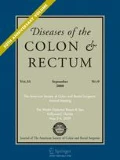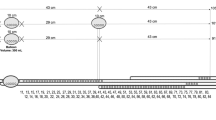Abstract
PURPOSE: The transient relaxation of the internal anal sphincter in response to rectal distention is believed to play an important role in the continence mechanism. Most anorectal physiology laboratories merely report the rectoanal inhibitory reflex as being either present or absent. This study aimed to assess the parameters of the rectoanal inhibitory reflex in incontinent and constipated patients and healthy control subjects, in an attempt to analyze differences in internal anal sphincter function in these groups. We analyzed each response of the internal anal sphincter to rectal distention with progressively increasing volumes of air at a single site (proximal anal canal). METHODS: Fifty-five constipated and 99 incontinent patients and healthy control subjects underwent manometry. Various parameters of the rectoanal inhibitory reflex were analyzed, and percentage sphincter relaxation was calculated at each volume at which rectoanal inhibitory reflex occurred. RESULTS: There was no difference in the volume of rectal distention required to elicit sensation (P = 0.626) or the rectoanal inhibitory reflex (P = 0.371) in the three groups. There was a significant correlation between the volume required to elicit the rectoanal inhibitory reflex and that at which sensation was first felt only in the incontinent (P = 0.0001) group. Significantly greater sphincter relaxation was seen at each volume (P = 0.001) in the incontinent as compared with the constipated patients. With progressive rectoanal inhibitory reflex, consistently progressive increases in internal anal sphincter relaxation were found only in the incontinent group. This consistent relationship was not seen in the constipated patients or in healthy control subjects. CONCLUSIONS: Assessment of various parameters of the rectoanal inhibitory reflex yielded important information regarding the continence mechanism. Altered responses of the internal anal sphincter in anorectal disorders plays a role in the associated physiologic impairment. This may have significant clinical implications with regard to sphincter-saving resections.
Similar content being viewed by others
References
WR Gowers (1877) ArticleTitleThe automatic action of the sphincter ani Proc R Soc Lond (Biol) 26 77–84
D Denny-Brown EG Robertson (1935) ArticleTitleAn investigation of the nervous control of defecation Brain 58 256–310
HL Duthie RC Bennett (1963) ArticleTitleThe relation of sensation in the anal canal to the functional anal sphincter Gut 4 179–182
DZ Lubowski RJ Nicholls M Swash MJ Jordan (1987) ArticleTitleNeural control of internal anal sphincter function Br J Surg 74 688–690
JF Stebbing (1998) ArticleTitleNitric oxide synthase neurones and neuromuscular behaviour of the anorectum Ann R Coll Surg Engl 80 137–145
S Rattan A Sarkar S Chakder (1992) ArticleTitleNitric oxide pathway in rectoanal inhibitory reflex of opossum internal anal sphincter Gastroenterology 103 43–50
TJ O’Kelly (1996) ArticleTitleNerves that say NO Ann R Coll Surg Engl 78 31–38
WG Lewis ME Williamson AS Miller PM Sagar PJ Holdsworth D Johnston (1995) ArticleTitlePreservation of complete anal sphincteric proprioception in restorative proctocolectomy Gut 36 902–906
MG O’Riordain RG Molloy P Gillen A Horgan WO Kirwan (1992) ArticleTitleRectoanal inhibitory reflex following low stapled anterior resection of the rectum Dis Colon Rectum 35 874–878
CL Lin CC Chen (1996) ArticleTitleThe rectoanal relaxation reflex and continence in repaired anorectal malformations with and without an internal sphincter-saving procedure J Pediatr Surg 31 630–633
CL Lin CC Chen (1996) ArticleTitleContinence and rectoanal sphincteric inhibitory reflex after posterior sagittal anorectoplasty J Formos Med Assoc 95 303–307
Y Gang (1995) ArticleTitleWhat is the desirable stimulus to induce the rectoanalinhibitory reflex? Dis Colon Rectum 38 60–63
WM Sun NW Read A Prior JA Daly SK Cheah D Grundy (1990) ArticleTitleSensory and motor responses to rectal distension vary according to rate and pattern of balloon inflation Gastroenterology 99 1008–1015
YP Sangwan JA Coller DJ Schoetz SuffixJr JJ Murray PL Roberts (1995) ArticleTitleLatency measurement of rectoanal reflexes Dis Colon Rectum 38 1281–1285
YP Sangwan JA Coller RC Barrett JJ Murray PL Roberts DJ Schoetz SuffixJr (1995) ArticleTitleDistal rectoanal excitatory reflex Dis Colon Rectum 38 916–920
LO Soifer A Olmos P Caruso (1990) ArticleTitleEvaluation of the involvement of the internal anal sphincter by the measurement of the amplitude and duration of the ano-rectal inhibitory reflex [in Spanish] Acta Gastroenterol Latinoam 20 221–224
YP Sangwan JA Coller DJ Schoetz SuffixJr PL Roberts JJ Murray (1996) ArticleTitleSpectrum of abnormal rectoanal reflex patterns in patients with fecal incontinence Dis Colon Rectum 39 59–65
AP Zbar M Aslam DM Gold C Gatzen A Gosling WA Kmiot (1998) ArticleTitleParameters of the rectoanal inhibitory reflex in patients with idiopathic fecal incontinence and chronic constipation Dis Colon Rectum 41 200–208
E Martinelli M Rinaldi CI Mitolo DF Altomare (1997) ArticleTitleComputerized analysis of the rectoanal inhibitory reflex in impaired rectoanal function Tech Coloproctol 1 64–67
C Cortesini C Paparozzi G Carassale P Bechi (1979) ArticleTitleRectoanal reflex in healthy subject Boll Soc Ital Biol Sper 55 877–883
S Akervall S Nordgren S Fasth T Oresland K Pettersson L Hulten (1990) ArticleTitleThe effects of age, gender, and parity on rectoanal functions in adults Scand J Gastroenterol 25 1247–1256
WM Sun NW Read (1989) ArticleTitleAnorectal function in normal human subjects Int J Colorectal Dis 4 188–196
WM Sun NW Read PB Miner (1990) ArticleTitleRelation between rectal sensation and anal function in normal subjects and patients with faecal incontinence Gut 31 1056–1061
JJ Bannister NW Read TC Donnelly WM Sun (1989) ArticleTitleExternal and internal anal sphincter responses to rectal distension in normal subjects and in patients with idiopathic faecal incontinence Br J Surg 76 617–621
R Farouk GS Duthie A Pryde DC Bartolo (1994) ArticleTitleAbnormal transient internal sphincter relaxation in idiopathic pruritus ani Br J Surg 81 603–606
VA Loening-Baucke MK Younoszai (1982) ArticleTitleAbnormal and sphincter response in chronically constipated children J Pediatr 100 213–218
DC Bartolo AM Roe J Virjee NJ Mortensen JC Locke-Edmunds (1988) ArticleTitleAn analysis of rectal morphology in obstructed defecation Int J Colorectal Dis 3 17–22
F Baldi F Ferrarini R Corinaldesi (1982) ArticleTitleFunction of the internal anal sphincter and rectal sensitivity in idiopathic constipation Digestion 24 14–22
RN Goes AJ Simons L Masri RW Beart SuffixJr (1995) ArticleTitleGradient of pressure and time between proximal anal canal and high-pressure zone during internal anal sphincter relaxation Dis Colon Rectum 38 1043–1046
R Farouk DC Bartolo (1993) ArticleTitleThe clinical contribution of integrated laboratory and ambulatory anorectal physiology assessment in faecal incontinence Int J Colorectal Dis 8 60–65
Author information
Authors and Affiliations
About this article
Cite this article
Kaur, G., Gardiner, A. & Duthie, G.S. Rectoanal Reflex Parameters in Incontinence and Constipation. Dis Colon Rectum 45, 928–933 (2002). https://doi.org/10.1007/s10350-004-6331-9
Issue Date:
DOI: https://doi.org/10.1007/s10350-004-6331-9




